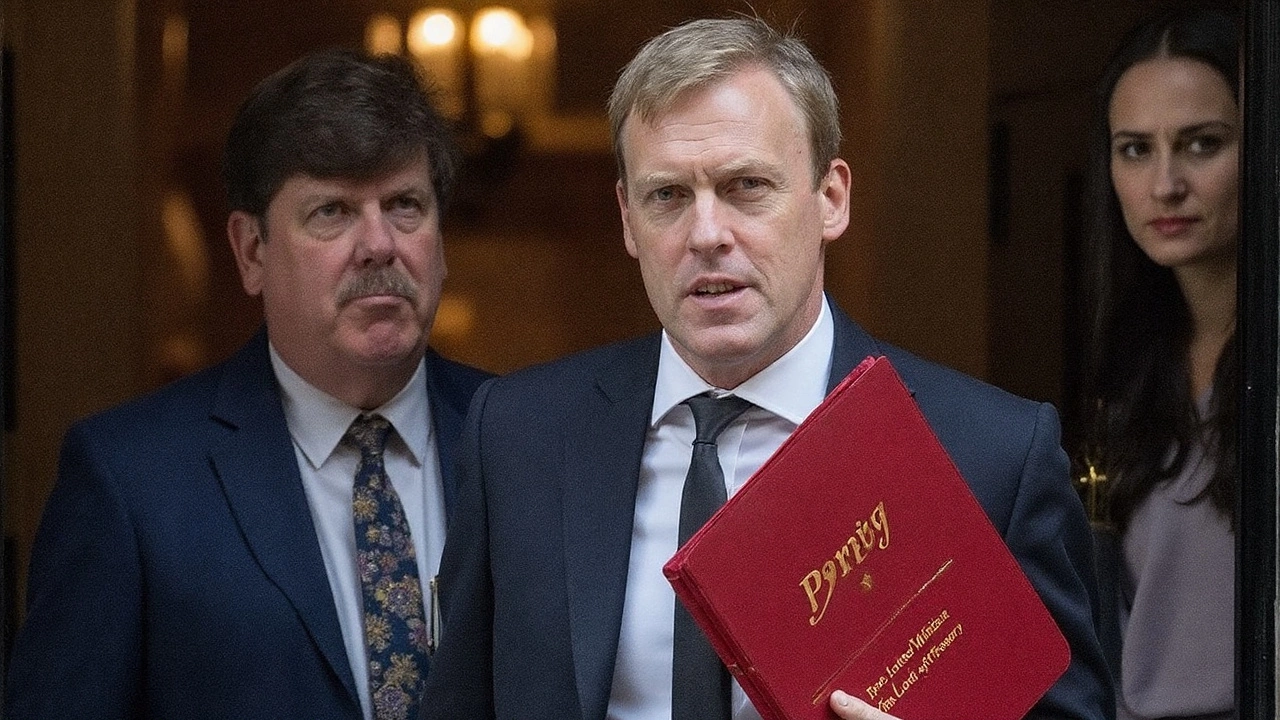One resignation, three vacancies, and a political chain reaction
One resignation knocked out three roles at once — and forced Sir Keir Starmer into the most wide-ranging reset of his top team since taking office. Angela Rayner quit as deputy prime minister and housing secretary after an investigation found she had underpaid £40,000 in stamp duty on a property purchase. Within hours, Downing Street pushed through a sweeping Keir Starmer reshuffle that moved 12 ministers and removed two more.
Rayner’s case turned on a technical but costly detail. She paid standard rates on a flat in Hove, East Sussex, having taken advice that it qualified as her only home because the family property in Ashton-under-Lyne was held in a trust for her disabled son. Standards adviser Sir Laurie Magnus concluded she should have paid the higher rate — the surcharge applied to additional properties since 2016 — and said she had breached the ministerial code. Rayner stood down, insisting she had acted in good faith but accepting the finding.
Her departure created a rare triple vacuum: deputy PM, housing secretary, and deputy leader of the Labour Party. The first two are government posts filled by the prime minister. The third is an elected party role, which now triggers a deputy leadership contest — a test of Labour’s direction that could open space for the party’s left to challenge the current course.
The speed of the reshuffle told its own story. Number 10 had planned a slower rebalancing later in the year. Rayner’s exit brought that forward overnight. Senior officials pushed back against talk of crisis, branding the moves a necessary pivot to keep policy delivery on track and the political message intact.

Who moved, who stayed, and what it means
The headline switch was David Lammy. After a year building diplomatic channels — including outreach to Donald Trump’s circle and Senator JD Vance — Lammy leaves the Foreign Office to become justice secretary and deputy prime minister. The shift breaks earlier signals that he would stay as foreign secretary for the full parliamentary term. It also puts him at the centre of domestic reform: sentencing, prisons, probation, legal aid, and the courts backlog now sit in his in-tray, alongside the coordinating role of deputy PM.
Yvette Cooper leaves the Home Office for a new, as-yet-unannounced brief. Her move clears the way for a different approach to policing, borders, and crime policy, but it also suggests Starmer wants her experience leveraged across a broader portfolio — potentially one tied to delivery and public service performance.
Pat McFadden gains a super-charged department designed to make growth the spine of government. The new setup pulls together benefits, pensions, and skills — parts of the old Work and Pensions remit and elements previously housed at Education. On paper, this aligns welfare, labour supply, and training with the growth mission. In practice, it concentrates tough calls in one place: welfare reform, pension rules, and the skills pipeline. The architecture alone points to tighter welfare policy ahead, even if No 10 is avoiding the phrase “cuts.”
Some ministers were moved out altogether. Ian Murray is gone as Scotland Secretary. Lucy Powell leaves the role of Leader of the House of Commons. Liz Kendall loses Work and Pensions. Sir Alan Campbell, the Chief Whip, is shifted after a bruising spell tied to missteps on welfare reform. If there’s a thread here, it’s that Starmer is hauling the machine back into alignment after policy stumbles and communication gaps.
Others stayed put by design. Rachel Reeves remains as Chancellor — a deliberate signal to markets, given how sensitive investors became to fiscal policy after recent years of turbulence. Ed Miliband stays as Net Zero Secretary, a nod to Labour’s green agenda and a sign Starmer isn’t about to jettison a figure popular on the party’s left just to buy a few days of peace.
Key moves at a glance:
- David Lammy: Foreign Secretary ➝ Justice Secretary and Deputy Prime Minister
- Yvette Cooper: Home Secretary ➝ New role (details to follow)
- Pat McFadden: Leads new growth-focused super-department (benefits, pensions, skills)
- Ian Murray: Sacked as Scotland Secretary
- Lucy Powell: Removed as Leader of the Commons
- Liz Kendall: Out as Work and Pensions Secretary
- Sir Alan Campbell: Chief Whip moved after welfare reform troubles
- Rachel Reeves: Stays as Chancellor
- Ed Miliband: Stays as Net Zero Secretary
Lammy’s move matters beyond job titles. The Justice Department is a pressure cooker: courts are clogged, prisons are close to capacity, and probation services are stretched. Any early misstep would become a front-page story. As deputy PM, Lammy also becomes one of the government’s main spokespeople, carrying political risk and reach in equal measure. The downside? Diplomatic relationships he built over the past year, especially in Washington, now need careful handover just months before a possible change in the White House.
The growth super-department is the most audacious part of the redesign. Folding benefits, pensions, and skills into one unit is an attempt to attack a stubborn problem: low productivity and too many people out of the labour market. Expect a package that tightens work-capability rules, expands training obligations, and reshapes support for the long-term sick and disabled — all sold as pro-growth, not austerity. The politics will be fierce. Labour campaigned on fairness as well as discipline; the base will watch for any hint that the burden falls on the vulnerable.
Keeping Rachel Reeves at the Treasury was meant to head off market nerves. Investors and ratings agencies dislike fiscal surprises. A clear signal on continuity — fiscal rules intact, departmental spending anchored to a medium-term plan — buys Starmer time to execute the rest of the reset. That consistency also helps McFadden: a growth push tied to credible budgeting tends to get a better hearing from business.
Ed Miliband’s survival matters for Labour’s climate pitch. The party’s green investment plan already took trims earlier in the year. Leaving Miliband in post suggests no further abrupt downscaling — at least for now. It also balances the reshuffle politically, keeping a standard-bearer of the party’s left at the Cabinet table while Starmer centralises decision-making elsewhere.
So why did this all happen now? Beyond the immediate trigger — the breach finding against Rayner — the reshuffle reads as a mid-course correction. Starmer has spent months telling officials to get “delivery-first.” The welfare rows and confusion around responsibilities made that hard. Consolidating briefs is one way to remove excuses and create a single line of accountability.
Rayner’s case will keep echoing. Stamp duty rules are technical, but the politics are blunt. Since 2016, buyers of additional homes face a 3% surcharge on top of the standard rate. The standards adviser’s conclusion — that Rayner should have paid the higher rate — made her position untenable in a government that leans hard on integrity. She argued that she followed advice and believed the Hove flat counted as her main residence. In the end, the optics around tax and the ministerial code left little room for discretion.
There’s also a crucial difference between what Starmer can do and what the party must do. The deputy PM is appointed; the deputy leader of Labour is elected by members, affiliates, and supporters. That contest will be a live referendum on where Labour goes next. Expect a tug-of-war over tone on welfare, migration, and climate spending — and a fight over who gets to define “fairness” inside the project.
Scotland and the Commons leadership changes point to a second priority: parliamentary management. With the Chief Whip moved and the Leader of the House replaced, Starmer is trying to rebalance discipline and tempo. The Commons timetable has been bumpy, with welfare legislation a particular pinch point. A tighter operation should mean fewer forced retreats and cleaner messaging when bills hit the floor.
The Home Office switch is the biggest unknown. Yvette Cooper’s tenure signalled a cautious approach on small boats, policing standards, and fraud. Her move suggests Starmer wants a fresh narrative on crime and borders, or simply needs her strengths applied to a cross-cutting mission. Either way, whoever takes the Home Office inherits a public that expects quick results on issues that rarely move quickly.
Internationally, allies will watch for continuity. Shifting Lammy from the Foreign Office so soon after months of outreach risks mixed signals. That said, Reeves staying at the Treasury — and the decision to hold steady on net zero — gives partners something solid: the money and the long-term climate policy are still wired into the plan.
Inside Labour, the mood is mixed but pragmatic. The party knows it cannot afford drift after a week of headlines on tax and standards. The reshuffle gives Starmer a chance to reset, align briefs with his growth mission, and move past a messy episode without tearing up the whole blueprint.
What happens next? The deputy leadership contest will shape the party’s internal weather for months. The new growth department will publish an initial workplan, likely tying skills funding to local employer needs and tightening rules on long-term inactivity. Justice will set out a prisons and courts relief package — temporary capacity, fast-track case management, and a plan to retain staff. And Number 10 will try to keep the focus on delivery, not drama.
In the background, Rayner’s story is a reminder of how quickly personal finances can become a political tripwire. Ministerial codes and tax rules leave little slack for ambiguity. Starmer’s response — fast, sweeping, unflinching — tells us how he plans to govern when the unexpected hits: move the pieces, preserve the core, and get back to work.
